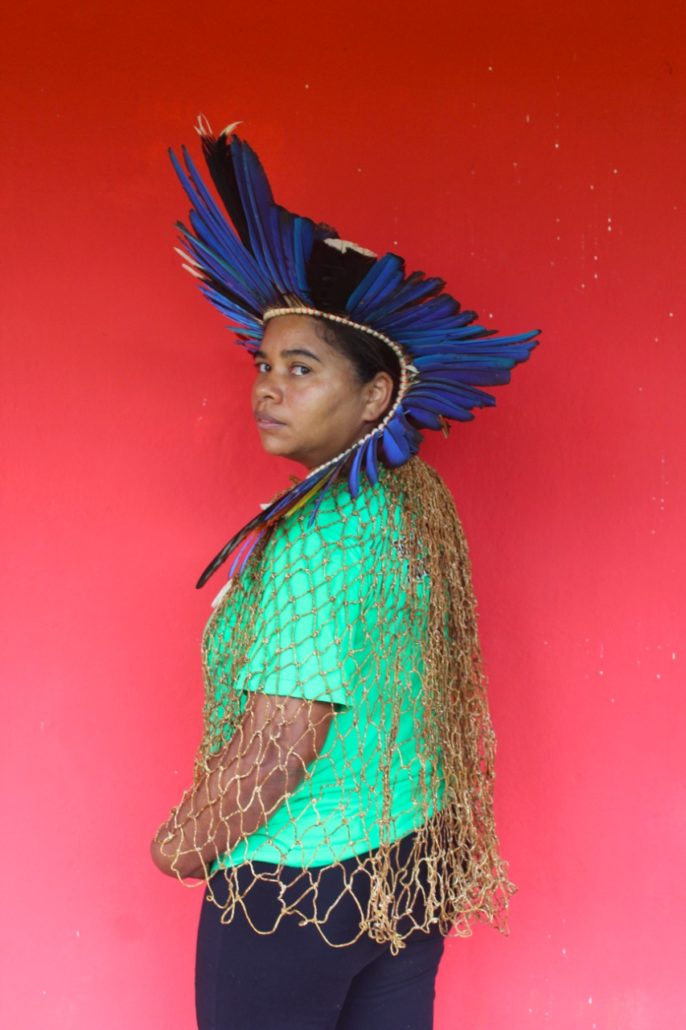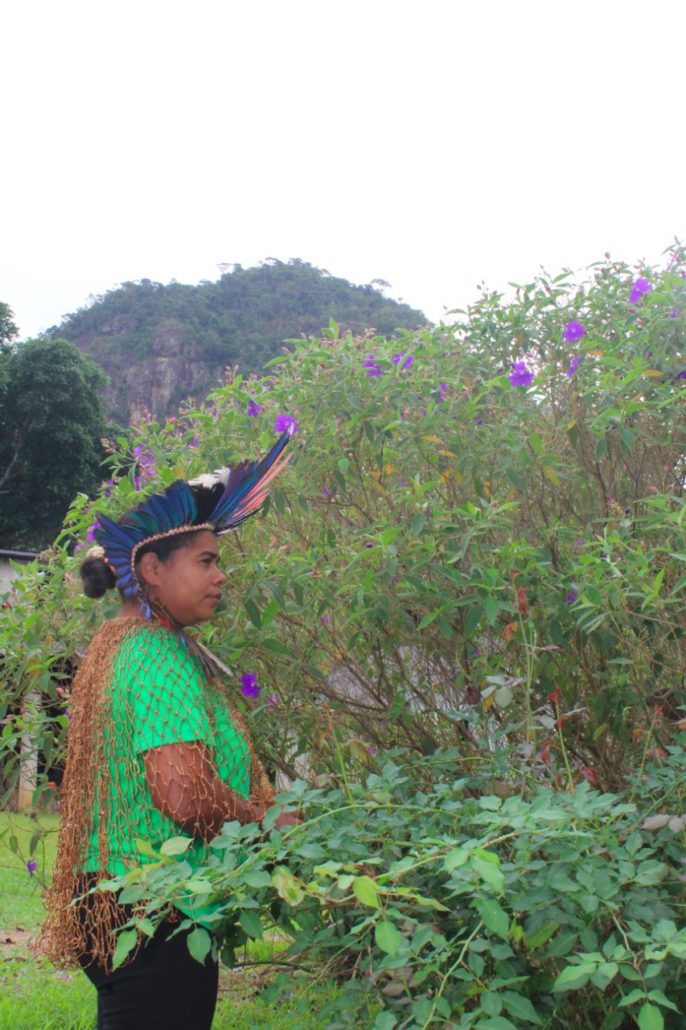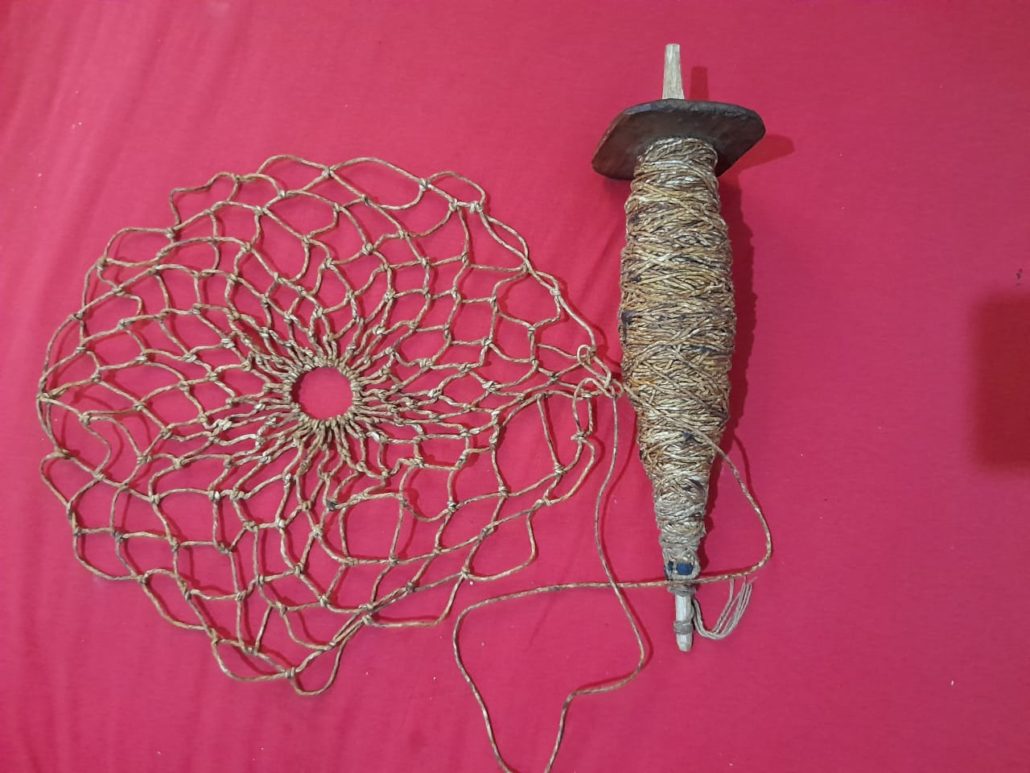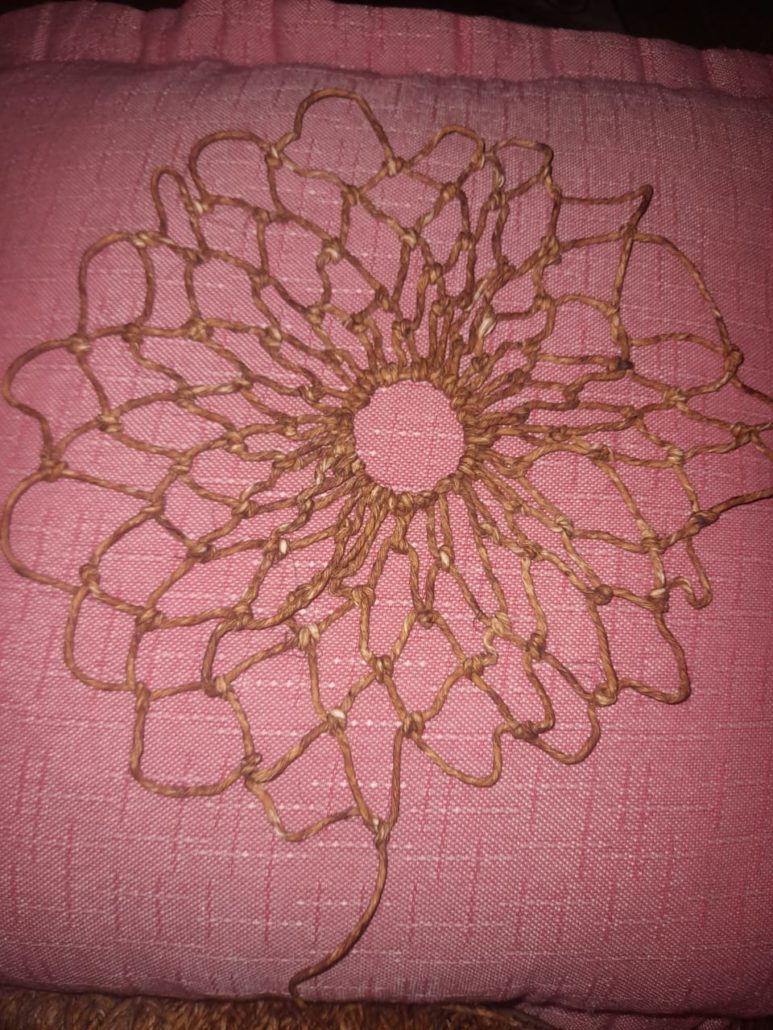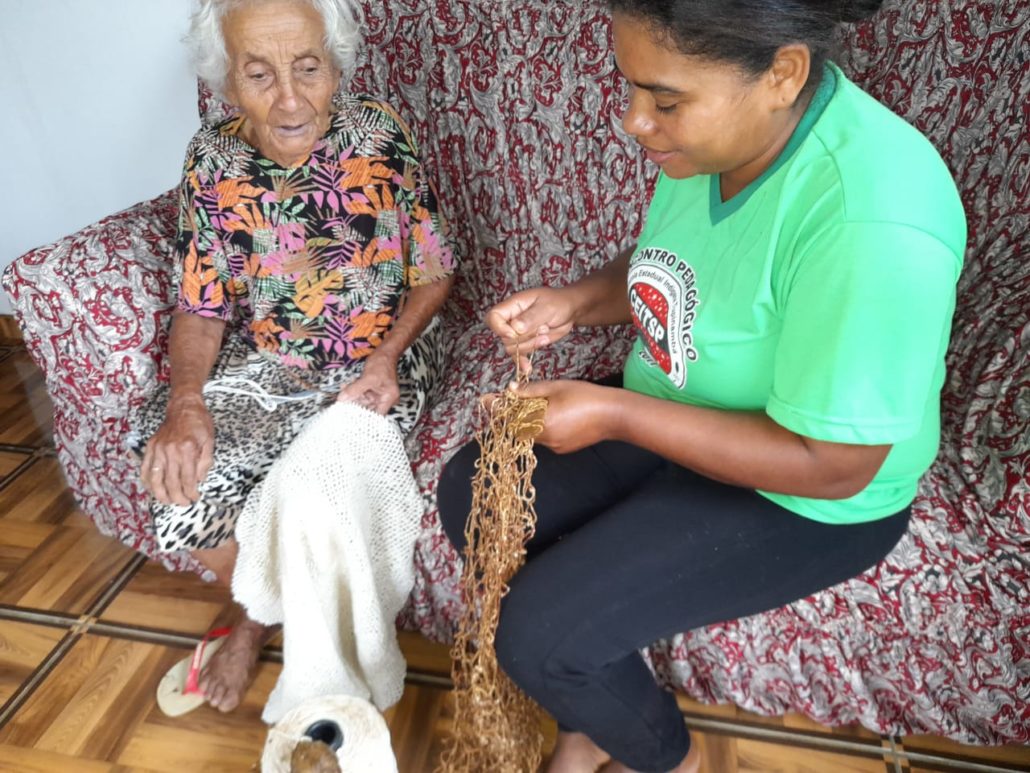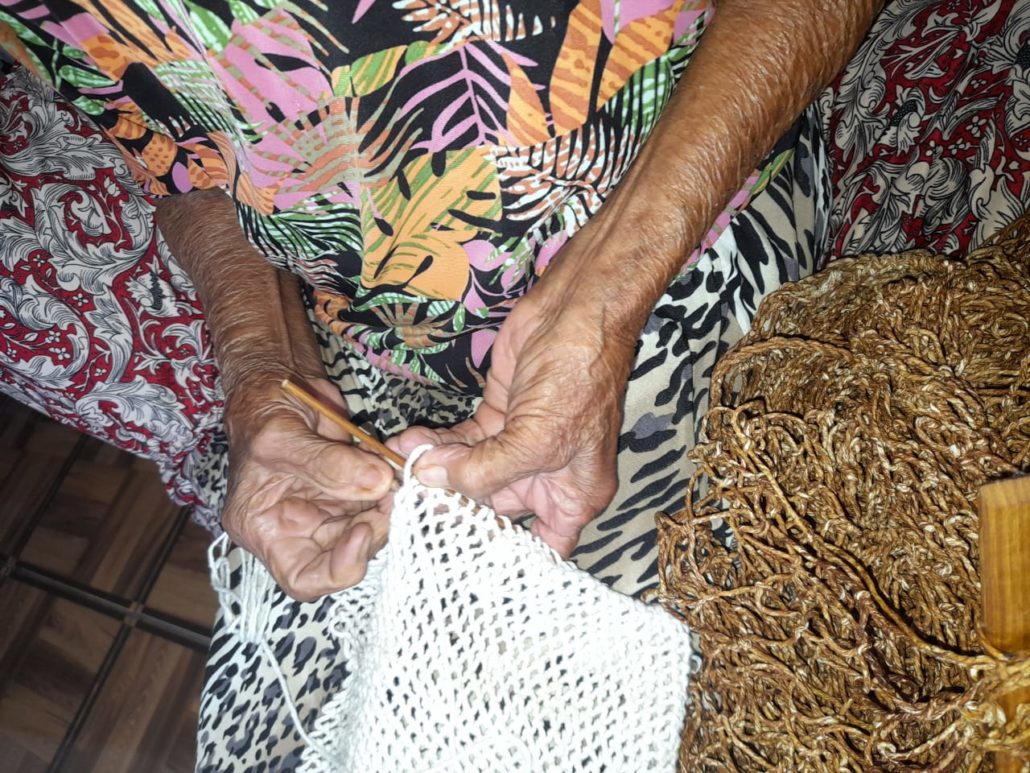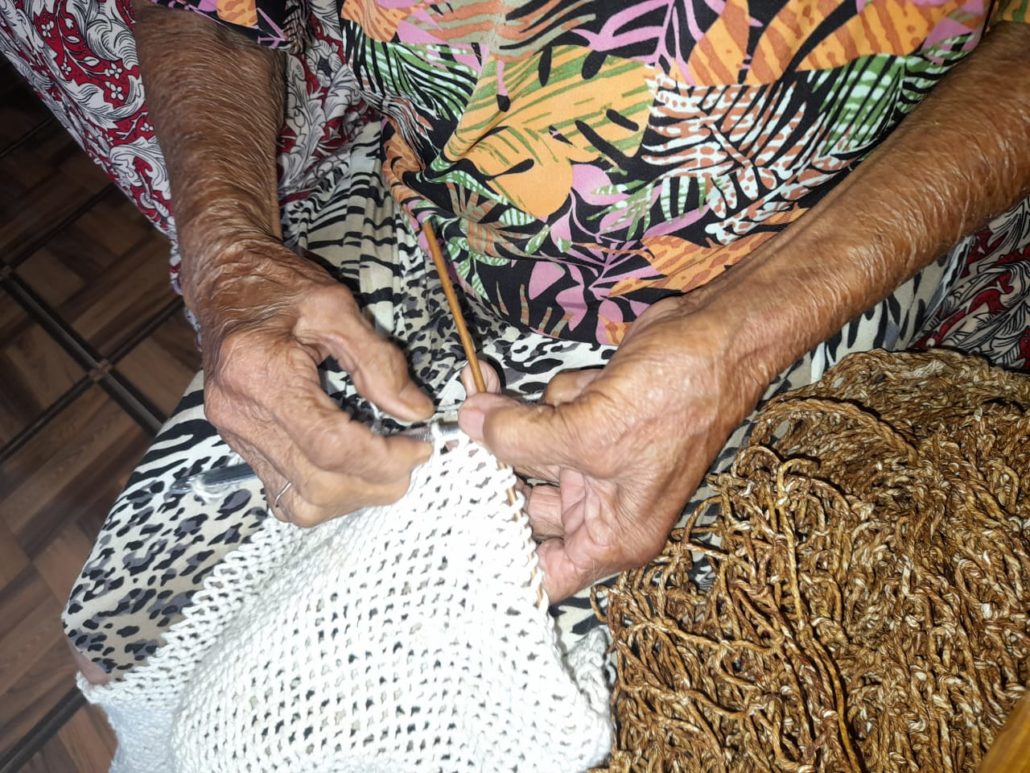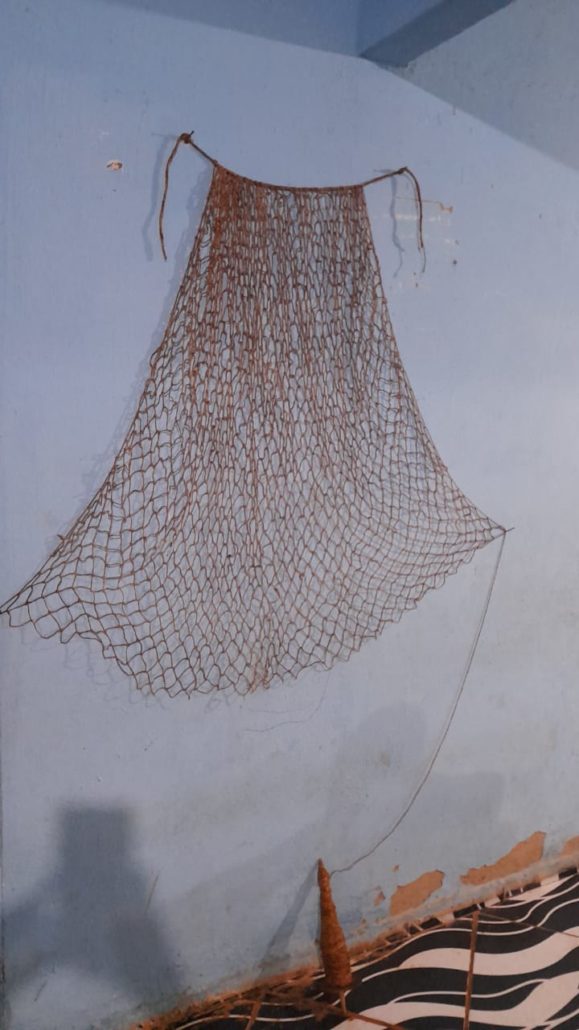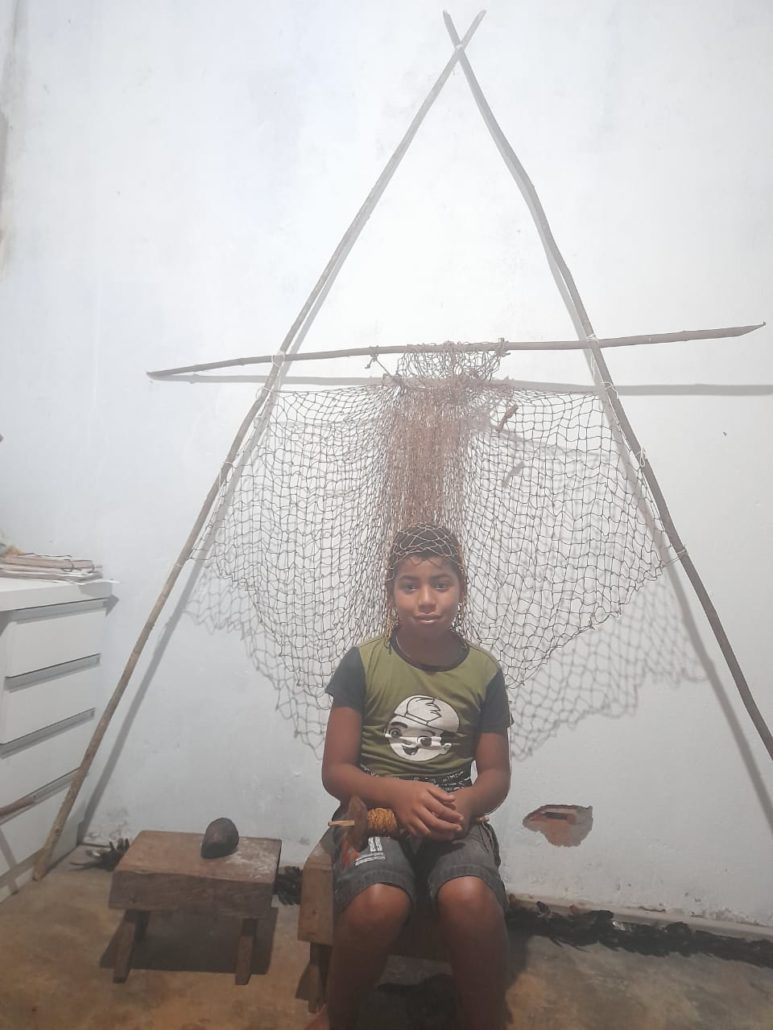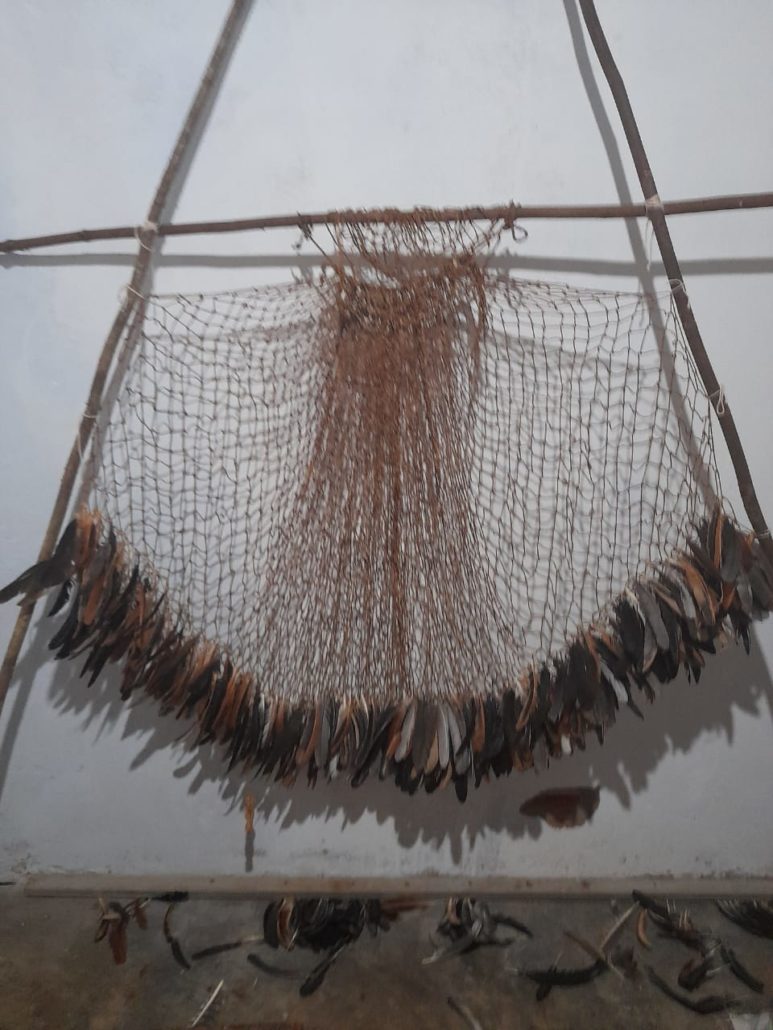Glicéria Jesus da Silva
Glicéria Jesus da Silva (Célia Tupinambá) is a well-known indigenous leader, teacher, intellectual and awarded artist from the village of Serra do Padeiro, located in the Tupinambá de Olivença Indigenous Territory (southern Bahia, Northeastern Brazil). Born and raised in the Tupinambá territory, she has always been deeply involved in her people’s daily life, political strategies and struggles. Since the foundation of the Tupinambá of Serra do Padeiro Indigenous Association (AITSP), in 2004, she has been a close collaborator of the organization, at times serving as its president or treasurer. For the past two decades, Glicéria has also acted as an Indigenous representative within multiple spheres, such as the United Nations Human Rights Council (UNHRC) and the Inter-American Commission on Human Rights (IACHR).
Currently, she is conducting research about the contemporary efforts of the Tupinambá to recover their language and aspects of their material culture, intertwined with their struggle for land. More specifically, she investigates the connections between the remaining capes of scarlet ibis feathers produced by the Tupinambá during the 16th and 17th centuries – all of which are kept in European museums –, the Old Tupi language and the production of contemporary capes. In 2020, Glicéria was awarded the Another Sky Prize (University of Sussex, Federal University of Bahia, Federal University of Recôncavo da Bahia and State University of Bahia) for creating a cape based on her recent findings. She is also one of the curators of the exhibition Kwá yapé turusú yuriri assojaba tupinambá | Essa é a grande volta do manto tupinambá, (This is the Grand Return of the Tupinambá mantle) which opened on September 2021 at the National Foundation of Arts gallery, in Brazil.
Because of her relentless commitment to the advancement of the Indigenous rights and, more specifically, the recognition of the Tupinambá’s land rights, Glicéria has been repeatedly threatened and criminalized. In 2010, returning from an official appointment during which she denounced the frequent episodes of police brutality against her people to then president Luiz Inácio Lula da Silva, she was arrested with her 2-month-old baby. Their incarceration, which persisted for over two months, was severely criticized by human rights organizations in Brazil and abroad.
Since 2004 the Tupinambá have used direct action to recover a significant portion of their territory. From the end of the 19th century onwards, that land had been turned by non-Indians into cocoa farms and resorts. Inhabited by humans and non-humans, the living and the dead, the Tupinambá territory is located in one of the few remaining patches of the Atlantic Forest. Even though the Brazilian State has failed to fulfill its constitutional duty, and the demarcation of the Tupinambá territory has not yet been completed, the community of Serra do Padeiro has regained possession of around 75% of its land. Rooted in their territory, engaged in the broader Indigenous movement, and connected to their ancestors, the Tupinambá have forged ways of living well in a world riven with entrenched ethnic, racial and social inequalities, and engulfed by the environmental crisis.
(Daniela Alarcon, Postdoctoral fellow, University of Pennsylvania)
Glicéria Jesus da Silva (Célia Tupinambá) é uma conhecida liderança indígena, professora, intelectual e artista premiada, que vive na aldeia Serra do Padeiro, localizada na Terra Indígena Tupinambá de Olivença (sul da Bahia, Nordeste do Brasil). Nascida e criada em território tupinambá, ela sempre esteve profundamente envolvida no cotidiano, nas estratégias políticas e nas lutas de seu povo. Desde a fundação da Associação dos Índios Tupinambá da Serra do Padeiro (AITSP), em 2004, tem colaborado diretamente com a entidade, havendo inclusive atuado como presidenta e tesoureira. Nos últimos 20 anos, Glicéria têm representado os povos indígenas em diversas esferas, entre as quais o Conselho de Direitos Humanos das Nações Unidas e a Comissão Interamericana de Direitos Humanos (CIDH).
Atualmente, Glicéria desenvolve pesquisa sobre os esforços contemporâneos dos Tupinambá para resgatar sua língua e aspectos de sua cultura material, entrelaçados com a luta pela terra. Mais especificamente, ela investiga as conexões entre os mantos de penas de guará produzidos pelos Tupinambá nos séculos 16 e 17 – todos os mantos remanescentes são mantidos em museus europeus –, o tupi antigo e a produção de mantos contemporâneos. Em 2020, Glicéria recebeu o prêmio Um Outro Céu (Universidade de Sussex, Universidade Federal da Bahia, Universidade Federal do Recôncavo da Bahia e Universidade Estadual da Bahia), pela criação de um manto baseado em suas pesquisas. Ela é também uma das curadoras da exposição Kwá yapé turusú yuriri assojaba tupinambá | Essa é a grande volta do manto tupinambá, aberta em setembro de 2021 na Galeria Fayga Ostrower da Fundação Nacional de Artes (Funarte), em Brasília.
Devido a seu compromisso incansável com a garantia dos direitos indígenas e, mais especificamente, com o reconhecimento dos direitos territoriais dos Tupinambá, Glicéria tem sido reiteradamente ameaçada e criminalizada. Em 2010, voltando de uma reunião durante a qual denunciou ao então presidente Luiz Inácio Lula da Silva a ocorrência de frequentes episódios de brutalidade policial contra seu povo, foi presa com seu bebê, então com dois meses de idade. O encarceramento, que durou mais de dois meses, foi duramente criticado por organizações de direitos humanos no Brasil e no exterior.
Por meio de ações diretas conhecidas como retomadas de terras, iniciadas em 2004, os Tupinambá lograram recuperar uma porção significativa de seu território, apropriado por não indígenas, sobretudo, a partir de fins do século 19, com o avanço da cacauicultura e do turismo. Habitado por humanos e não humanos, vivos e mortos, o território tupinambá se situa em uma das poucas áreas remanescentes de Mata Atlântica. Apesar do descumprimento pelo Estado brasileiro de seu dever constitucional de finalizar a demarcação da Terra Indígena Tupinambá de Olivença, a aldeia Serra do Padeiro, com sua mobilização, recuperou a posse de cerca de 75% de suas terras. Enraizados em seu território, engajados no movimento indígena mais amplamente e conectados aos ancestrais, os Tupinambá têm construído cotidianamente formas de viver bem, em um mundo assolado por profundas desigualdades étnicas, raciais e sociais, e engolfado pela crise ambiental.
(Daniela Fernandes Alarcon, pesquisadora de pós-doutorado, Universidade da Pensilvânia)
Filmed in May 2014 in the Tupinambá de Olivença Indigenous Territory, Southern Bahia (Brazil), this documentary brings together testimonies and archival images to present this people’s struggle to recover their land. The Tupinambá have been waiting for official territorial recognition since 2004. Because of the State’s inaction, they have mobilised collectively to recover their lands in retomadas de terras (retakings of land) This political action has allowed them to retrieve considerable portions of their territory, previously expropriated by non-Indians. However, this has led to their criminalization and to violent attacks against them – perpetrated by the Brazilian state and by individuals and groups opposed to actual enactment of their constitutionally recognized rights. The film shows, from the Tupinambá perspective, the history of their dispossession and resistance. The former is inextricably linked to the advance of the agricultural frontier at the end of the 19th century and to the rise of cocoa farmers; the latter to the recognition of Indigenous territorial rights in Brazil’s 1988 Constitution. For the Tupinambá, the land belongs to the most important entities in their cosmology, the encantados.
Brazil, 2015, 24’57.
Documentary film. Subtitled in English. Direction: Daniela Alarcon. Research and screenplay: Daniela Alarcon. Edition: Fernanda Ligabue. Photography: Fernanda Ligabue. Additional photography: Thiago Dezan and Paula Daibert. Colour grading: Fernanda Ligabue. Sound: Fernanda Ligabue. Original soundtrack: Bruno Prado and Daniel Carezzato. Audio mixing and mastering: Bruno Prado and Daniel Carezzato. Graphic design: Marina Kanzian. Produced by Repórter Brasil. Accomplished through crowdfunding.
Exhibit
In two short films, we listen to Glicéria as she explains the connections between her people’s territory, the ongoing political process of taking it back from invaders that involved, from 2004, a series of direct actions, the subsequent rewilding of the deforested areas, and Tupinambá feather mantles. Her intense encounter with an ancient Tupinambá feather mantle in a European museum set her on a path to learning how to make, and making, a contemporary mantle, a veritable re(discovery of knowledge) that was made possible when she set into action a cosmopolitical set of relations, bringing together humans and non-humans. Kin, friends, allies, ancestors, and spirits of the land, on the one hand, and eagles, bees and forest plants, on the other, collaborate with her to channel the mantles into being.
In the series of photos Glicéria shows us some of the stages involved in making a feather mantle. We see the context in which she works, her family house in the Tupinambá village in Serra do Padeiro. As she creates the fibre support for the feathers in the form of a loosely knotted triangular net, an older woman crochets with cotton fibre, and a young lad poses in a playful fashion for her photos.
Em dois curtas-metragens, ouvimos Glicéria explicar as conexões entre o território de seu povo, o processo politico, ainda em curso, de retomada dos invasores que envolveu, a partir de 2004, uma série de ações diretas, o consequente reflorestamento das áreas desmatadas, e Manto de penas Tupinambá. Seu intenso encontro com um antigo manto de penas tupinambá em um museu europeu a colocou no caminho de aprender a fazer, e fazer, um manto contemporâneo, uma verdadeira (re-)descoberta de um saber que se tornou possível quando ela colocou em ação um conjunto de relações cosmopolíticas, aproximando humanos e não humanos. Parentes, amigos, aliados, ancestrais e espíritos da terra, por um lado, e águias, abelhas e plantas da floresta, por outro, colaboram com ela para canalizar os mantos para a existência.
Na série de fotos, Glicéria mostra-nos algumas das etapas da confecção de um manto de penas. Vemos o contexto em que ela trabalha, a casa de sua família na aldeia Tupinambá na Serra do Padeiro. Enquanto ela cria o suporte de fibra para as penas na forma de uma rede triangular com nós espaçados, uma mulher mais velha faz crochê com fibra de algodão e um rapaz posa de forma lúdica para suas fotos.
Film 1 – Glicéria talks about the Exhibition “This is the Grand Return of the Tupinambá Mantle”
A exposição “Kwá yapé turusú yuriri assojaba tupinambá | Essa é a grande volta do manto tupinambá” em cartaz na Galeria Fayga Ostrower – Funarte Brasília, outubro, 2021. O manto que se tornou o eixo central da mostra foi confeccionado por Glicéria Tupinambá, artista e liderança indígena. No vídeo, Glicéria fala sobre a trajetória dela com o manto tupinambá.
Produção audiovisual: syna mídia — Secretaria Especial da Cultura | Ministério do Turismo | Fundação Nacional de Artes, Brasil
Site oficial: http://www.funarte.gov.br/
Film 2 – The Cloak is the Territory of the Tupinambá
This video was made for Glicéria Tupinambá’s presentation in July 2021 at ISEE ESEE Degrowth 2021, a conference of the International Network for Research on Degrowth (Degrouth), the International Society for Ecological Economics (ISEE) and the European Society for Ecological Economy (ESEE). The meeting brought together researchers, people from communities in the global South and North, activists, artists and policy makers. Célia spoke about the relationship between the return of the Tupinambá Mantle and the territory of the Tupinambá people from Serra do Padeiro (BA/Brazil).
Film 3 – Development is a Hole in the Ground Where Once There Were Trees
Photographs

